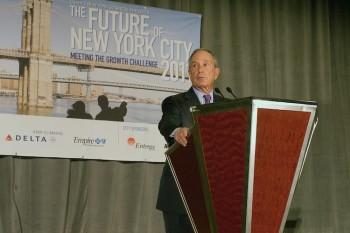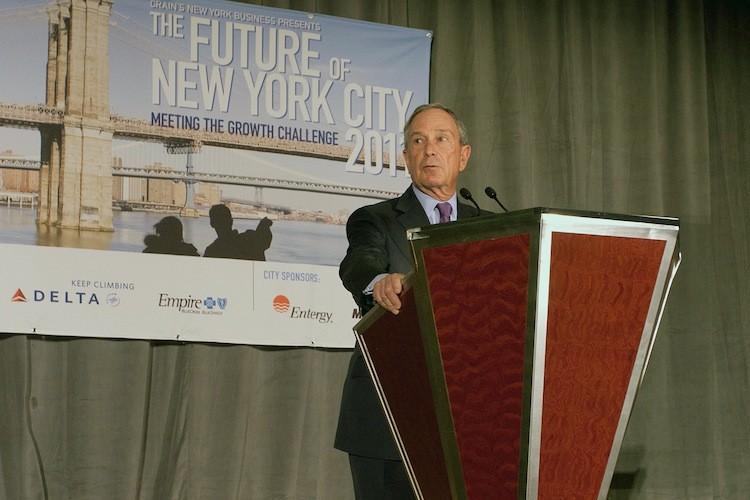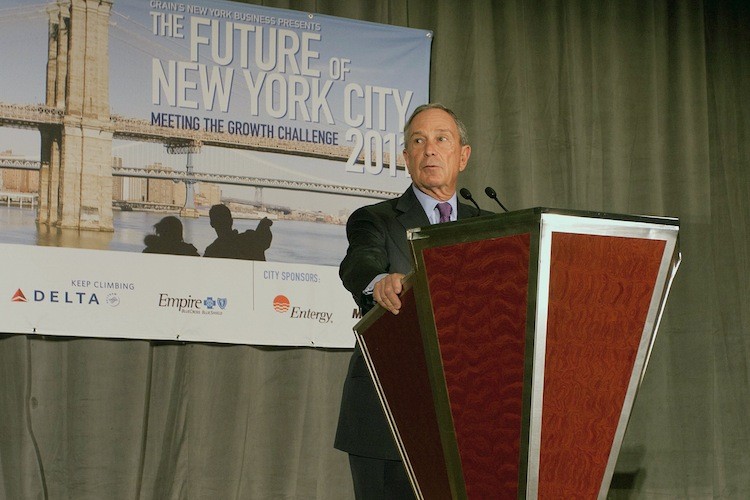Tech Industry Dominates Plan for New York’s Future
Crain’s New York Business hosted a conference titled Future of NYC: Meeting the Growth Challenge, which drew many of the city’s influentials to the Grand Hyatt hotel in Midtown on Tuesday.

LOOKING AHEAD: Mayor Michael Bloomberg gives the keynote address at a Crain's New York Business conference held on Tuesday to assess the city's economic future. Tara MacIsaac/The Epoch Times
|Updated:






